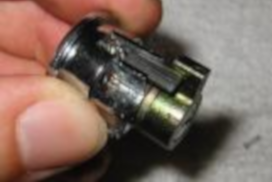Conspicuity …Recognition …Safety ….
This article deals primarily with improving recognition and speed of recognition…hopefully leading to action by drivers of ONCOMING vehicles (whether from your front, rear, or sides), but also covers how YOU see other vehicles.
Many safety agencies …and studies, …have proven that safety is enhanced for motorcyclists having modulated headlights …as the pulsing light attracts attention, particularly important to a motorcyclist, who wants, or should want, an oncoming driver to notice & recognize that a motorcycle is there. This has been shown to reduce left-turn accidents, & in general, reduce most biking accidents.
Studies have also proven that bright clothing and certain colors of helmets help reduce accidents considerably.
State and Federal Governments testing and reports is NOT extensive for motorcycles, nor is private/commercial testing/reports. While many effects do cross-over between carts and trucks and motorcycles, the information is spotty about specifics for motorcyclists. Further, there is a considerable amount of wrong ‘information’ in common use or understanding. Especially notable is the paucity of knowledgeable effects of movement and head positioning of drivers/riders of vehicles on recognition times; although there are other things, including lighting, colors, etc….and these are vast subjects. Many of the technical details are in this article: http://bmwmotorcycletech.info/hdlite.htm
The information in that article is extensive. I HIGHLY suggest you stop here, and read that ENTIRE article, before proceeding!


